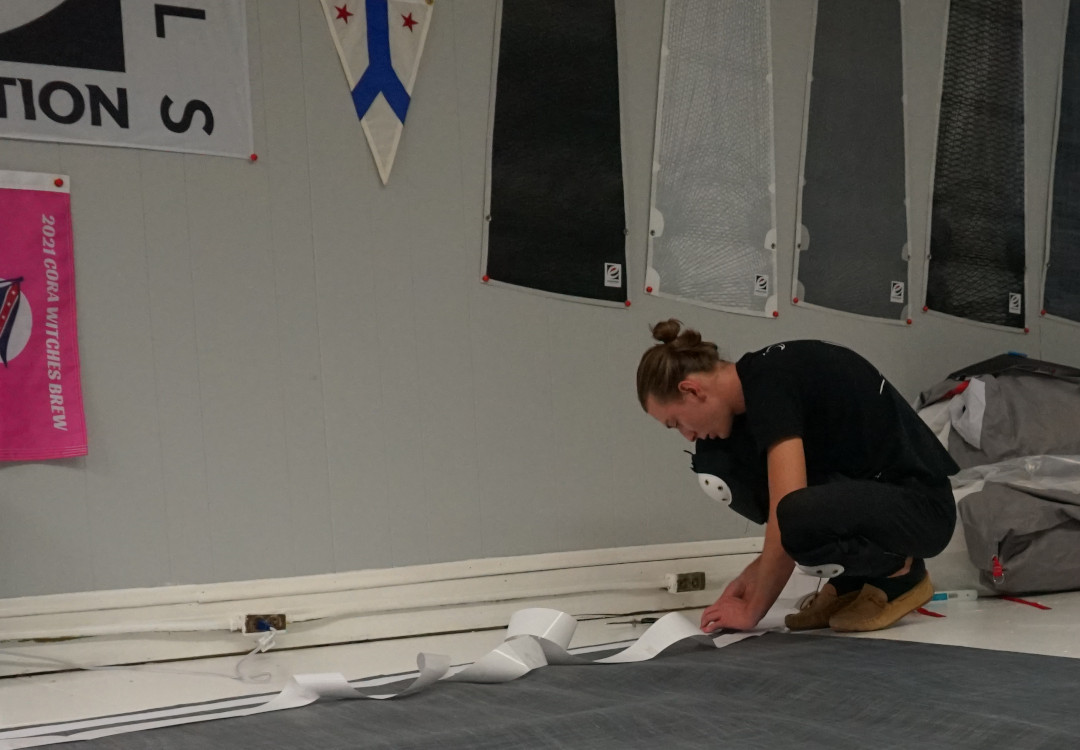Quick Guide for Jib Sizing
We’re looking at jib sizing for boats with non-overlapping headsails in this article. If your boat has overlapping headsails, head over here (link) for more information. To help determine if your boat was designed for overlapping or non-overlapping headsails, click here (link)
For Racing
Choosing the proper jib size can make all the difference when it comes to speed on the course. Having the correct sail for the conditions will balance the helm and make the boat go faster through the water. Not every boat will have all of these sails, and the maximum size for your headsail can vary depending on how your boat was designed and what the designer intended. If you have any questions on which sail is best for your boat, feel free to reach out to our team.
J1 Light Air Jib (0-12 knots)
When the boat needs all the power it can muster to keep moving in light and lumpy conditions, the J1 is the sail to use. Like shifting into first gear, this sail is designed to maximize flow between the jib and mainsail at low wind speeds to get the boat up and moving. The J1 will be the deepest and lightest sail in the inventory, generally at the maximum dimensions allowed by class or rating rules.
J1.5 All Purpose Light Air (5-15)
The J.15 is a more versatile option for light but building wind strength. Like the J1, the J1.5 is also built to the maximum allowed dimensions. However, it is slightly flatter than the J1 for better efficiency across a wider range of conditions. The shape of a J1.5 can vary greatly depending on the intended use of the sail and how it will fit into the inventory as a whole.
J2 Medium Air Sail (10-20 knots)
The J2 is the most versatile sail of most headsail inventories. It is designed for sailing when there is more than enough breeze to keep the boat at top-speed while some de-powering is necessary. J2’s are generally as big or slightly smaller than a J1 with some slight geometry adjustments for tighter sheeting. It will also be flatter and stronger to handle medium or heavy conditions.
#3 Jib – 95%-105% LP (17-30 knots)
The #3 Jib is the heavy-weather workhorse in a boat’s upwind sail inventory. Smaller, flatter, and heavier than a J1 or J2, the #3 is designed to keep the boat under control and moving when the wind starts howling. Not only will it de-power the boat in big breeze, but the #3’s smaller size make it easier to trim and maneuver.
#4 Jib 80%-95% LP (23 knots plus)
Designed for the days you thought about staying at home, the #4 Jib will make the boat manageable while still being able to power through rough seas. The smallest, strongest, and flattest headsail in the inventory, a #4 keeps the boat flatter and more in-control, as it has a shorter luff-length than a #3 to achieve greater balance at the helm.
Storm Jib
Despite our best efforts, every sailor knows the feeling of getting caught in unavoidable weather. The Storm Jib is the sail to use to get home safety on those days. Storm Jib sizing is generally dictated by the rules of the race or offshore category you’re participating in, but one thing is for sure: their area is a fraction of the size when compared to the rest of the headsails. They are typically built with heavy, orange material that can withstand extreme conditions and be seen over long distances. No sailor expects to use this sail often, but every sailor wants to be prepared when the time comes.


